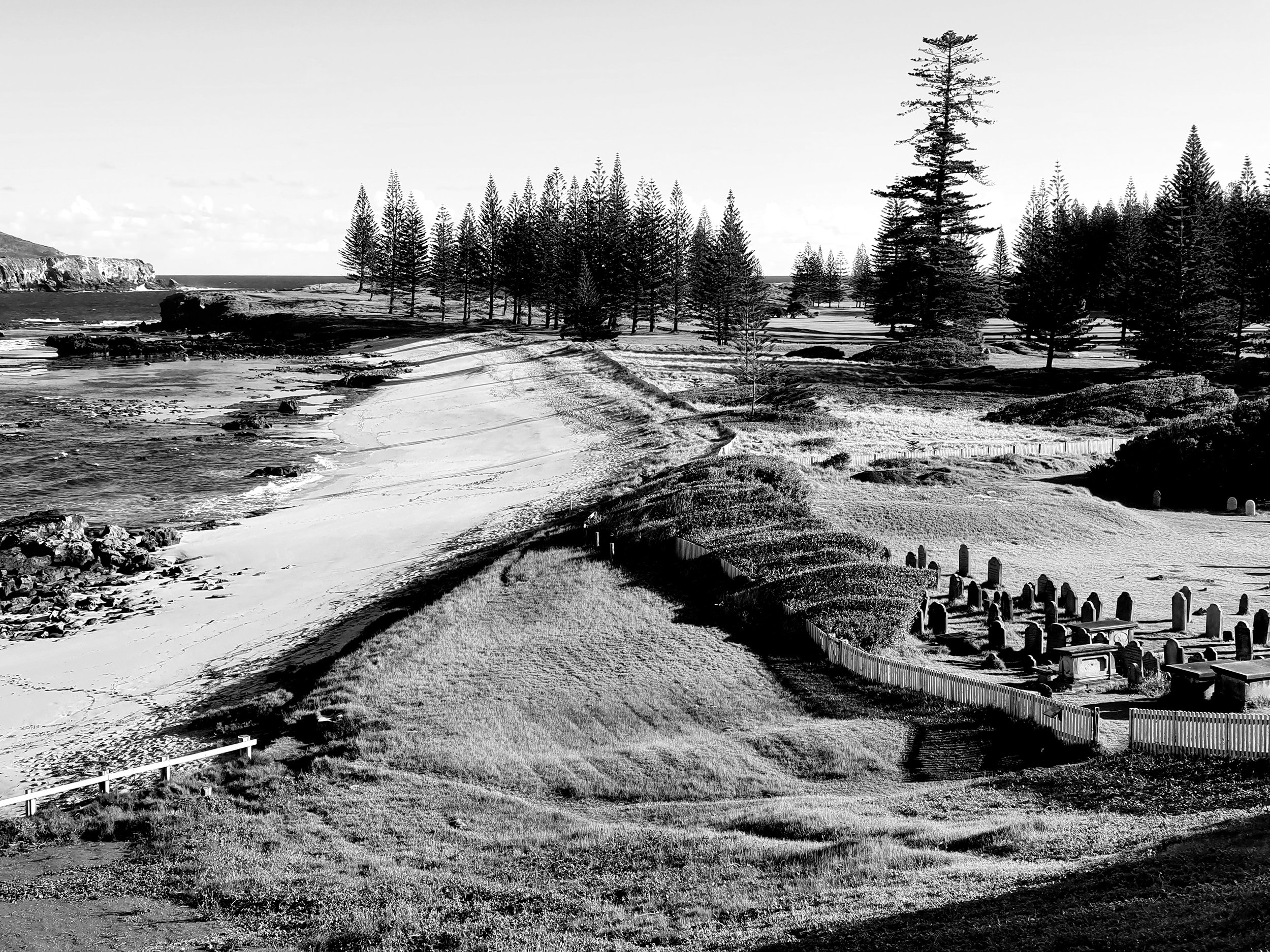This week in the Norfolk Island lagoons saw some old friends return and some new (to me) visitors that appeared in Emily Bay for the first time. I also paid a visit to the more exposed Cemetery Bay for the first time since wild winds and surf went through earlier this month and last month.
On 16 June, I came across two of our larger parrotfish species – the marbled parrotfish, Leptoscarus vaigiensis and the bluebarred parrotfish, Scarus ghobban – hanging out together just off the Salt House in Emily Bay. I’ve watched both of these individuals grow into adulthood. Having started out in the shallows of Emily Bay, the marbled parrotfish tends to prefer the outer areas of the reef, near to where a channel was previously blasted through the reef. The bluebarred parrotfish is more wide-ranging and less skittish, happy to let me watch as he feeds off the algae using his two fused front teeth. This feature is what differentiates parrotfish from their close relatives, the large wrasse, Labridae, family.
Other welcome visitors included our regular pair of snubnosed darts, Trachinotus blochii. These two love to placidly graze in the shallows at the Lone Pine end of Emily Bay, but I have also seen them in the sandy shallows at Slaughter Bay. One of them has a distinctive nip out of his tail, so I can tell it is the same pair.
The following day I saw a solo convict surgeonfish, Acanthurus triostegus, for the first time in the Emily Bay lagoon. I’ve only ever seen these in Cemetery Bay before, and usually in small schools of the same species.
I also found hiding in plain sight a rather weird looking coral, called Rhodactis bryoides. Once I’d seen one or two, then I saw a whole carpet of them. These were all on the reef immediately adjacent to the Salt House.
Finally, a brief word about Cemetery Bay. I ventured into the water there on Sunday for the first time in perhaps a couple of months. In the intervening time we’ve had those huge swells and surf I mentioned in my nature journal published on 8 June. At the far end, away from the cemetery, the beach has been scoured out, with rocks and sand dumped liberally up onto the grassed area above. In the lagoon it was unrecognisable, with drifts of sand filling the channels, and some smashed coral. Hopefully, over time, the sand will clear naturally. But for the moment it is quite a different scene below water!








